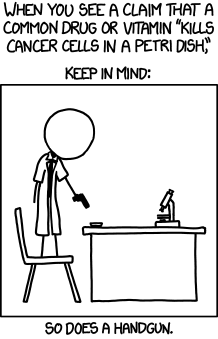For a molecule to be a drug, it has to have a physiological effect of some kind. They bind to a microscopic target, often a protein or receptor of interest, and induce a response. But to get to that target, a molecule has to be druglike.
There are techniques for getting substances with low bioavailability exactly where you want them to go, but they’re generally considered inadvisable when you’re practicing medicine.

There are a few rules pharmaceutical chemists use to estimate the bioavailability of a particular chemical. Drugs need to be soluble in both water and lipids, so they need both polar and non-polar regions. They need to be small enough to diffuse through the body and chemically active enough to bind to their target. The rule of five formalizes some of these intuitions, which helps when designing chemical libraries for pharmaceutical research.
To invent a drug, researchers use robots to run tests on thousands of microtiter plates. Using druglikeness as a filter, it’s possible to cut down the search space from the vastness of all possible chemicals to a mere 1060 potentially active molecules, few enough to actively screen for more useful options by considering the intended target.
Druglikeness has drawbacks. It excludes halogens, which are regularly found in highly steric drugs. It excludes large peptide drugs like insulin, and it excludes biologics like monoclonal antibodies. It excludes radiation therapy, organ transplants, vaccines, surgery and psychotherapy, while including poisons, mutagens, and quindecillions of molecules of no particular interest. It’s a starting point, nothing more.
Advancing the art of medicine is more complicated than it seems. The best and brightest fail more often than they succeed. Despite that, we’ve come a long way since prehistoric humans first began experimenting with plants for their medicinal properties.
This is a blog about things that are like drugs.